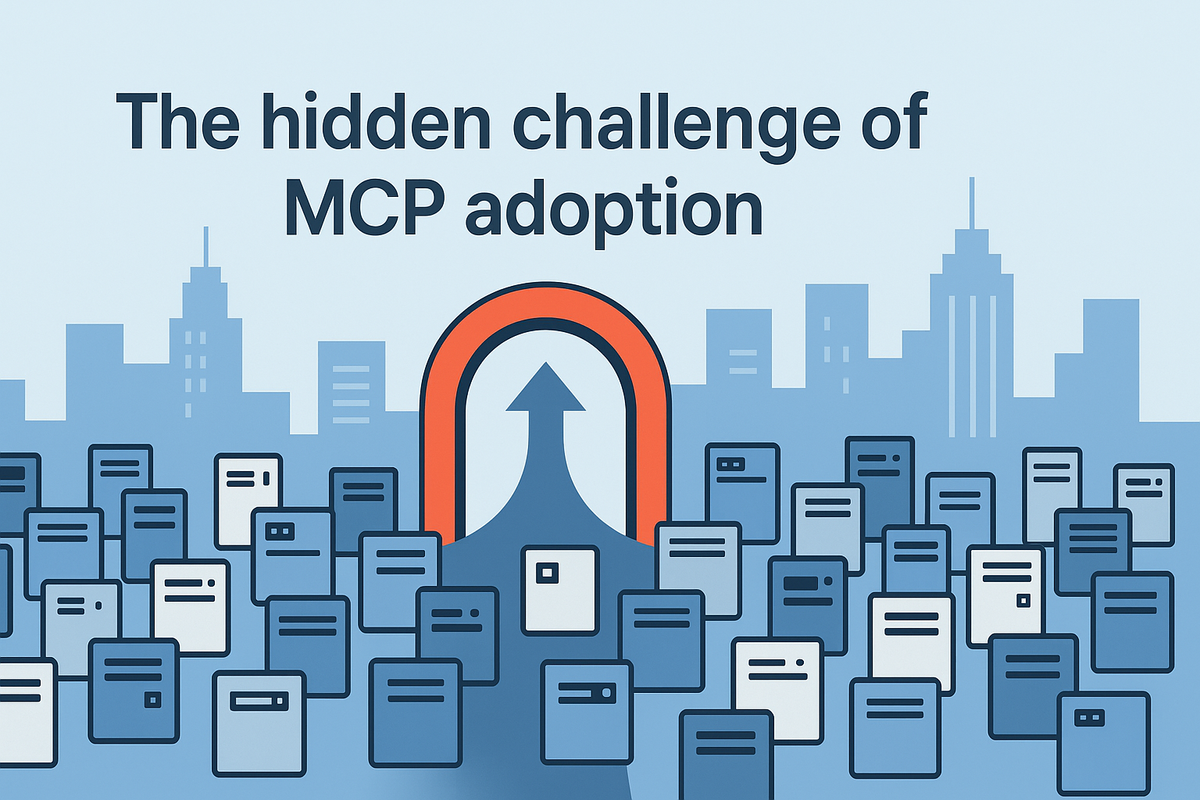The hidden challenge of MCP adoption in enterprises in 2025
MCP adoption is creating server sprawl inside enterprises. Learn why governance and secure gateways are key to making MCP sustainable at scale.

The Model Context Protocol (MCP) has made it simple to connect AI agents with tools, APIs, and enterprise systems. For developers, spinning up an MCP server takes minutes, a quick way to expose functionality and experiment. But this ease of creation comes with a new problem: in large organizations, MCP servers are multiplying at an overwhelming pace.
What starts as a handful of servers quickly turns into hundreds, even thousands, spread across teams and projects. Each one may work fine in isolation, but at scale, they create an invisible sprawl. IT teams struggle to track what exists, end users don’t know which servers are safe or supported, and security concerns grow with every unmanaged endpoint.
Why server sprawl is a hidden problem
On the surface, MCP adoption looks like progress — developers are experimenting, connecting systems, and building useful integrations. But underneath, most enterprises are already dealing with server sprawl: an uncontrolled wave of MCP servers with no consistent way to manage them.
There are a few reasons this is happening:
- Too easy to create: Any developer can spin up an MCP server for an API or tool. The result is dozens of variations of the same server, all slightly different.
- No central catalog: Servers live in GitHub repos, internal docs, or Slack threads. There’s no single source of truth.
- End-user confusion: Non-technical employees don’t know which MCP servers are official or safe to use. A “shadow catalog” emerges, full of outdated or duplicated entries.
- Unmanaged risk: Without oversight, servers may expose sensitive data, bypass compliance, or allow unsafe tool calls.
The danger is that by the time organizations notice the problem, it’s already widespread. Like the early days of containers or microservices, MCP servers can quickly go from empowering to unmanageable if governance isn’t addressed early.
Secure adoption of MCP servers in enterprises
For most organizations, the challenge is making sure the right people can safely consume them. A developer experiment might work fine in isolation, but when hundreds of employees start relying on MCP servers, the risks multiply.
Enterprises need more than raw creation. They need a layer of governance that ensures:
- Centralized discovery: A single catalog where employees can find the servers that are approved and maintained.
- Access control: RBAC to limit who can connect to which servers.
- Observability: Usage data, audit logs, and visibility into what servers are being called and how.
- Guardrails: Filters and policies that enforce compliance and prevent unsafe or non-compliant tool usage.
Why gateways are critical
With these in place, MCP can evolve from scattered experiments into a reliable part of enterprise workflows. Instead of sprawl, organizations get a secure ecosystem of MCP servers that users can trust and IT can govern.
Enterprises can’t rely on ad-hoc solutions to manage MCP at scale. A list of server URLs in a shared document or a GitHub repo might work for a small team, but it quickly breaks down when hundreds of employees need consistent, secure access. This is where a gateway becomes essential.
An MCP gateway acts as the single entry point for all server traffic. Instead of users connecting directly to servers scattered across teams and infrastructure, every interaction is routed through the gateway. That shift unlocks several advantages:
- Unified security: Policies, authentication, and guardrails are applied consistently, no matter which server is being accessed.
- Centralized observability: Admins gain full visibility into usage — what servers are being called, by whom, and with what results.
- Controlled consumption: IT can govern access across internal servers, third-party servers, and external APIs, all from one place.
- Scalability: Enterprises avoid the sprawl of unmanaged connections, instead standardizing on a secure, governable model.
Accelerate MCP adoption
As more teams discover how easy it is to spin up servers, the risk of sprawl will grow. The organizations that get ahead of this will focus not just on building servers, but on governing how they are consumed. That means central catalogs, consistent security, and visibility into usage across the enterprise. And it means adopting gateways as the connective tissue that makes MCP sustainable at scale.
At Portkey, we’re building an MCP Hub, a governance-first gateway designed to give enterprises centralized control over MCP servers. If you’d like a sneak peek and to see how it works in practice, book a demo with us.
